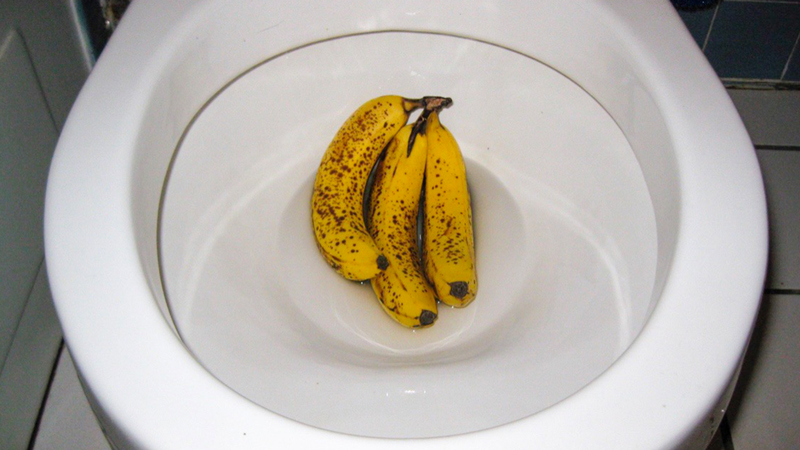This post down below relating to Flushing Food Down the Toilet? is definitely stimulating. You should see for yourself.

Intro
Lots of people are typically confronted with the issue of what to do with food waste, especially when it comes to leftovers or scraps. One usual inquiry that occurs is whether it's alright to flush food down the bathroom. In this post, we'll explore the reasons why people may take into consideration purging food, the repercussions of doing so, and different methods for appropriate disposal.
Reasons why people might take into consideration purging food
Absence of recognition
Some individuals might not understand the possible injury triggered by purging food down the commode. They may erroneously believe that it's a harmless method.
Benefit
Purging food down the bathroom might feel like a quick and very easy service to dealing with unwanted scraps, especially when there's no nearby garbage can available.
Negligence
In some cases, individuals may just select to flush food out of large idleness, without thinking about the repercussions of their actions.
Effects of flushing food down the commode
Ecological effect
Food waste that ends up in rivers can add to air pollution and injury marine communities. In addition, the water used to flush food can strain water resources.
Pipes problems
Flushing food can result in blocked pipes and drains pipes, creating pricey pipes repair services and inconveniences.
Kinds of food that need to not be flushed
Fibrous foods
Foods with coarse appearances such as celery or corn husks can get entangled in pipes and create clogs.
Starchy foods
Starchy foods like pasta and rice can soak up water and swell, leading to clogs in pipelines.
Oils and fats
Greasy foods like bacon or food preparation oils need to never ever be flushed down the commode as they can solidify and cause clogs.
Correct disposal approaches for food waste
Utilizing a garbage disposal
For homes outfitted with waste disposal unit, food scraps can be ground up and purged with the plumbing system. Nevertheless, not all foods appropriate for disposal in this manner.
Recycling
Specific food packaging products can be recycled, lowering waste and lessening environmental influence.
Composting
Composting is a green way to get rid of food waste. Organic materials can be composted and utilized to improve dirt for gardening.
The significance of appropriate waste management
Minimizing ecological injury
Appropriate waste management practices, such as composting and recycling, assistance reduce air pollution and preserve natural deposits for future generations.
Securing pipes systems
By staying clear of the method of flushing food down the bathroom, home owners can protect against pricey plumbing repair work and keep the honesty of their plumbing systems.
Final thought
Finally, while it might be tempting to flush food down the commode for benefit, it is very important to recognize the prospective repercussions of this action. By adopting appropriate waste administration methods and taking care of food waste responsibly, individuals can contribute to healthier pipes systems and a cleaner environment for all.
FLUSH FOOD DOWN THE TOILET?
FLUSHING FOOD CAN CAUSE BLOCKED DRAINS IN YOUR HOME
All of the plumbing fixtures in your home are connected to the same sewer pipe outside of your home. This outdoor sewer pipe is responsible for transporting all the wastewater from your home to the Council sewer mains. Even small pieces of food that go down the kitchen sink can cause problems for your sewer. It should therefore be obvious that flushing larger bits of food, such as meat, risks a clog in either the toilet itself or the sewer pipes. Flushing greasy food is even more problematic because oil coagulates when it cools, coating the interior lining of your pipes.
THE TOILET IS NOT A BIN
Food isn’t the only thing that people shouldn’t be flushing down the toilet. People use the toilet to dispose of all kinds of things such as tampons, makeup wipes, dental floss, kitty litter and even underwear. Water goes to great lengths to educate residents about the high costs and stress placed on wastewater treatment systems simply from people flushing the wrong stuff down the toilet. It costs taxpayers millions of dollars each year, and homeowners thousands in blocked drain repairs.
FLUSHING FOOD IS A WASTE OF WATER
Flushing food is a waste of our most precious resource - water. In June this year Level 1 water restrictions were introduced to protect water supply from drought conditions. Much of New South Wales continues to be affected by prolonged drought with recent figures revealing up to 97 per cent of the state remains in drought. Depending on whether you have a single or dual flush toilet, every single flush uses between five and 11 litres of water. In the current climate this is a huge amount of water to be wasting on flushing food that should be placed in the bin (or better yet, the compost).
https://www.jabplumbingsolutions.com.au/blog/can-you-flush-food-down-the-toilet

Hopefully you liked our post on Flushing Food Down the Toilet?. Thank you so much for taking the time to read through our article post. If you please take a moment to distribute this entry if you appreciated it. I truly appreciate your readership.
Course Detail